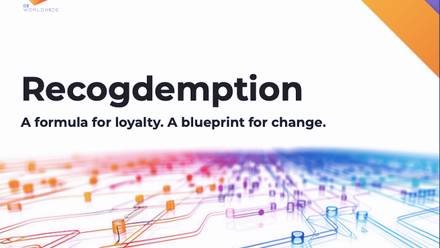Top tips on engaging different demographics in your workforce
Today's workforce is a diverse blend of different generations, cultural backgrounds, and personal experiences. Engaging your workforce isn't a one-size-fits-all endeavor. To create an inclusive work environment that results in high employee engagement, it's essential to tailor your HR strategy to meet the diverse needs of your employees.
Here are some useful tips on engaging different demographics within your workforce.
1. Understand generational differences
Each generation brings unique perspectives and values, shaped by their upbringing. This can often result in differences to preferred ways of working, or even cross generational criticism, particularly of younger generations.
- Baby boomers (born 1946-1964) and Generation X (born 1965-1980) were raised during times when job security and stability were paramount. Baby Boomers were taught to repress their feelings, so generally view vulnerability as a weakness. To engage them, recognize their contributions and provide opportunities for them to mentor younger employees. Offer stable career paths and acknowledge their experience and loyalty.
- Millennials (born 1981-1996) came of age during a technological boom and economic uncertainty. They seek meaningful work, continuous feedback, and career advancement opportunities. They value transparency and inclusivity. Encourage collaboration, provide regular recognition, and create opportunities for personal and professional growth.
- Generation Z (born 1997-2012) has grown up in a digital world with constant connectivity. They are tech-savvy, value diversity, and are open about mental health and emotional struggles, viewing this openness as a sign of strength and authenticity. With many prioritizing health over salary, it’s important to know that this generation, who will make up 30% of the workforce next year, are attracted to employers who genuinely care about their health and wellbeing.
2. Embrace comprehensive diversity
A truly inclusive workplace values and recognizes all forms of diversity. Some of the more common aspects include gender, cultural background, and neurodiversity.
- Gender equality: ensure equal opportunities for pay, career advancement and leadership roles, and consider offering flexible working arrangements and parental leave for all genders.
- Cultural awareness: celebrate cultural holidays and traditions to promote inclusivity and encourage open dialogue to build knowledge and understanding across cultural groups.
- Neurodiversity: support neurodiverse employees by creating an accessible and supportive environment - small details can make a big difference. Develop policies for flexible working hours and reasonable accommodations.
3. Create safe and inclusive environments
Employees should feel safe to express themselves and share feedback without fear of judgment or retribution.
- Promote open communication: encourage employees to share their ideas, concerns, and feedback, such as through surveys, manager feedback, and one-on-one meetings to ensure every voice is heard.
- Empathy and support: train leaders to be empathetic, approachable, and supportive of their team members' needs. Empathetic leadership helps build trust and creates a supportive work environment.
- Address discrimination: establish and enforce clear policies against discrimination and harassment. Create a culture where employees feel safe to voice their concerns and know that their issues will be addressed promptly and fairly.
- Inclusive leadership: promote diversity within leadership teams to reflect the broader workforce. Diverse leadership provides role models for employees from all backgrounds and helps encourage a sense of belonging.
4. Offer flexible and holistic support
Flexible tools and support systems are vital to meet the diverse needs of your workforce. This includes health benefits, professional development opportunities, and adaptable work arrangements.
- Health and wellbeing programs: offer comprehensive health benefits, wellbeing programs, and mental health support. These are universally appreciated across all demographics and are key to maintaining employee well-being.
- Work-life balance: provide flexible working hours and remote work options to help employees balance their professional and personal lives effectively. This flexibility is particularly valued by younger generations and those with caregiving responsibilities.
- Professional development: offer opportunities for continuous learning and career growth. Implement training programs, workshops, and pathways for advancement to help employees develop their skills and progress in their careers.
In conclusion
Engaging a diverse workforce requires understanding and celebrating individual differences while recognizing universal desires. By understanding generational traits, recognizing all aspects of diversity, building psychologically safe spaces, and providing flexible tools and support, organizations can create a vibrant, inclusive, and engaged workplace. This not only enhances employee satisfaction but also drives organizational success.
Supplied by REBA Associate Member, Walking on Earth (WONE)
Walking on Earth (WONE) is the first preventative stress management solution for the workplace.








